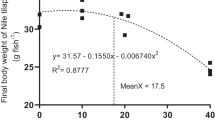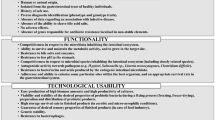Abstract
The impact of strain or feed intake on food trace elements and its health risk assessment is still ambiguous, and therefore, available facts are rare. Therefore, this study aimed to assess the effects of both strains and feed intake on trace elements depositions to egg, toxic heavy metals concentration, and health risk assessment of egg consumption. In the current cross-sectional study, the selected strains, including Shaver White, Hy-Line W36, Bovanse White, Lohman LSL-Lite, and Native laying hens of Khorasan Razavi province, were examined. A total number of 50 samples of eggs and 15 samples of their feed was purchased from poultry farms. Yolk and white were separately analyzed. Sample preparation was performed by wet digestion followed by Inductively Coupled Plasma Mass Spectrometry. Trace metals Pb, As, Cd, Hg, Cr, and Ni were detected. Statistical analysis was performed in Stata11.2 portable software. Although there was a significant difference in strains and feed, no significant difference was observed in trace elements in egg contents (weight of egg white and egg yolk). Mercury concentration in all the samples was below the instrument detection limit. In this study, the target hazardous quotients were below one for all trace elements. Therefore, Iranian does not experience the adverse health effects due to the consumption of egg.




Similar content being viewed by others
References
Abbas, T. E., Elzubeir, E. A., & Arabbi, O. H. (2008). Drinking water quality and its effects on productive performance and immune response of layers. International Journal of Poultry Science, 7(5), 441–444.
Ali, A., Campbell, D., Karcher, D., & Siegford, J. (2016). Influence of genetic strain and access to litter on spatial distribution of 4 strains of laying hens in an aviary system. Poultry Science, pew236, 95, 2489–2502.
Applegate, E. (2000). Introduction: nutritional and functional roles of eggs in the diet. Journal of the American College of Nutrition, 19(sup5), 495S–498S.
Bilo, F., Lodolo, M., Borgese, L., Bosio, A., Benassi, L., Depero, L. E., & Bontempi, E. (2015). Evaluation of heavy metals contamination from environment to food matrix by TXRF: the case of rice and rice husk. Journal of Chemistry, 2015(12), 1–12. https://doi.org/10.1155/2015/274340.
Canli, M., & Atli, G. (2003). The relationships between heavy metal (Cd, Cr, Cu, Fe, Pb, Zn) levels and the size of six Mediterranean fish species. Environmental Pollution, 121(1), 129–136.
Commission, C. A. (2013). Codex general standard for contaminants and toxins in food and feed, CODEX STAN 193–1995.
Dauwe, T., Janssens, E., Kempenaers, B., & Eens, M. (2004). The effect of heavy metal exposure on egg size, eggshell thickness and the number of spermatozoa in blue tit Parus caeruleus eggs. Environmental Pollution, 129(1), 125–129. https://doi.org/10.1016/j.envpol.2003.09.028.
Demirulus, H. (2013). The heavy metal content in chicken eggs consumed in Van Lake Territory. Ekoloji, 22(86), 19–25.
Dobrzański, Z., Górecki, H., Chojnacka, K., Górecka, H., & Synowiec, M. (2007). Effect of dietary humic preparations on the content of trace elements in hens’ eggs. American Journal of Agricultural and Biological Science, 2(2), 234-240
Domingo, J. L. (2014). Health risks of human exposure to chemical contaminants through egg consumption: a review. Food Research International, 56, 159–165.
Ershad, S. (2005). Performance of hybrid layers and native hens under farmers’ management in a selected area of Bangladesh. International Journal of Poultry Science, 4(4), 228–232.
Fallah, A. A., Saei-Dehkordi, S. S., Nematollahi, A., & Jafari, T. (2011). Comparative study of heavy metal and trace element accumulation in edible tissues of farmed and wild rainbow trout (Oncorhynchus mykiss) using ICP-OES technique. Microchemical Journal, 98(2), 275–279.
Gebrekidan, A., Weldegebriel, Y., Hadera, A., & Van der Bruggen, B. (2013). Toxicological assessment of heavy metals accumulated in vegetables and fruits grown in Ginfel river near Sheba Tannery, Tigray, Northern Ethiopia. Ecotoxicology and Environmental Safety, 95, 171–178. https://doi.org/10.1016/j.ecoenv.2013.05.035.
Giannenas, I., Nisianakis, P., Gavriil, A., Kontopidis, G., & Kyriazakis, I. (2009). Trace mineral content of conventional, organic and courtyard eggs analysed by inductively coupled plasma mass spectrometry (ICP-MS). Food Chemistry, 114(2), 706–711. https://doi.org/10.1016/j.foodchem.2008.09.079
Hallenbeck, W. H. (1993). Quantitative risk assessment for environmental and occupational health. CRC Press.
Herron, K. L., & Fernandez, M. L. (2004). Are the current dietary guidelines regarding egg consumption appropriate? The Journal of Nutrition, 134(1), 187–190.
Islam, M. S., Ahmed, M. K., & Habibullah-Al-Mamun, M. (2015). Determination of heavy metals in fish and vegetables in Bangladesh and health implications. Human and Ecological Risk Assessment: An International Journal, 21(4), 986–1006.
Iwegbue, C., Nwajei, G., & Iyoha, E. (2008). Heavy metal residues of chicken meat and gizzard and Turkey meat consumed in Southern Nigeria. Bulgarian Journal of Veterinary Medicine, 11(4), 275–280.
Kaplan, O., Yildirim, N., Yildirim, N., & Cimen, M. (2011). Toxic elements in animal products and environmental health. Asian Journal of Animal and Veterinary, 6(3), 228–232.
Ki, S. A., Khaniki, G. J., Shariatifar, N., Nazmara, S., & Akbarzadeh, A. (2017). Contamination of chicken eggs supplied in Tehran by heavy metals and calculation of their daily intake. Journal of Health in the Field, 2(4).
Kiliç, Z., Acar, O., Ulaşan, M., & Ilim, M. (2002). Determination of lead, copper, zinc, magnesium, calcium and iron in fresh eggs by atomic absorption spectrometry. Food Chemistry, 76(1), 107–116.
Küçükyılmaz, K., Bozkurt, M., Yamaner, C., Çınar, M., Çatlı, A., & Konak, R. (2012). Effect of an organic and conventional rearing system on the mineral content of hen eggs. Food Chemistry, 132(2), 989–992.
McEvoy, J. (2002). Contamination of animal feedingstuffs as a cause of residues in food: a review of regulatory aspects, incidence and control. Analytica Chimica Acta, 473(1–2), 3–26.
Novak, C., Yakout, H., & Scheideler, S. (2006). The effect of dietary protein level and total sulfur amino acid: lysine ratio on egg production parameters and egg yield in Hy-Line W-98 hens. Poultry Science, 85(12), 2195–2206.
Saei-Dehkordi, S. S., Fallah, A. A., & Nematollahi, A. (2010). Arsenic and mercury in commercially valuable fish species from the Persian Gulf: influence of season and habitat. Food and Chemical Toxicology, 48(10), 2945–2950.
Salar-Amoli, J., & Ali-Esfahani, T. (2015). Determination of hazardous substances in food basket eggs in Tehran, Iran: a preliminary study. Veterinary Research Forum, 6(2), 155–159.
Scheideler, S., Jaroni, D., & Froning, G. (1998). Strain and age effects on egg composition from hens fed diets rich in n-3 fatty acids. Poultry Science, 77(2), 192–196.
Scott, T., & Silversides, F. (2000). The effect of storage and strain of hen on egg quality. Poultry Science, 79(12), 1725–1729.
Shah, A., Kazi, T., Baig, J., Afridi, H., Kandhro, G., Khan, S., et al. (2010). Determination of total mercury in chicken feed, its translocation to different tissues of chicken and their manure using cold vapour atomic absorption spectrometer. Food and Chemical Toxicology, 48(6), 1550–1554.
Shaheen, N., Ahmed, M. K., Islam, M. S., Al-Mamun, H., Tukun, A. B., Islam, S., Rahim, A.T.M.A. (2016). Health risk assessment of trace elements via dietary intake of ‘non-piscine protein source’ foodstuffs (meat, milk and egg) in Bangladesh. Environmental Science and Pollution Research, 23(8), 7794–7806.
Silversides, F., Korver, D., & Budgell, K. (2006). Effect of strain of layer and age at photostimulation on egg production, egg quality, and bone strength. Poultry Science, 85(7), 1136–1144.
Singh, R., Cheng, K., & Silversides, F. (2009). Production performance and egg quality of four strains of laying hens kept in conventional cages and floor pens. Poultry Science, 88(2), 256–264.
Tuzen, M., Soylak, M., Citak, D., Ferreira, H. S., Korn, M. G., & Bezerra, M. A. (2009). A preconcentration system for determination of copper and nickel in water and food samples employing flame atomic absorption spectrometry. Journal of Hazardous Materials, 162(2), 1041–1045.
Uluozlu, O. D., Tuzen, M., Mendil, D., & Soylak, M. (2009). Assessment of trace element contents of chicken products from Turkey. Journal of Hazardous Materials, 163(2-3), 982–987.
Van Overmeire, I., Pussemier, L., Waegeneers, N., Hanot, V., Windal, I., Boxus, L., et al. (2009). Assessment of the chemical contamination in home-produced eggs in Belgium: general overview of the CONTEGG study. Science of the Total Environment, 407(15), 4403–4410. https://doi.org/10.1016/j.scitotenv.2008.10.066.
Vincevica-Gaile, Z., Gaga, K., & Klavins, M. (2013). Food and environment: trace element content of hen eggs from different housing types. APCBEE Procedia, 5(0), 221–226. https://doi.org/10.1016/j.apcbee.2013.05.038.
Waegeneers, N., Hoenig, M., Goeyens, L., & De Temmerman, L. (2009). Trace elements in home-produced eggs in Belgium: levels and spatiotemporal distribution. Science of the Total Environment, 407(15), 4397–4402.
Wang, X., Sato, T., Xing, B., & Tao, S. (2005). Health risks of heavy metals to the general public in Tianjin, China via consumption of vegetables and fish. Science of the Total Environment, 350(1–3), 28–37. https://doi.org/10.1016/j.scitotenv.2004.09.044.
Funding
The authors would like to thank the Faculty of Medicine, Mashhad University of Medical Sciences, Mashhad, Iran, for financially supporting this study (grant no: 940732).
Author information
Authors and Affiliations
Corresponding author
Rights and permissions
About this article
Cite this article
Hashemi, M., Sadeghi, A., Dankob, M. et al. The impact of strain and feed intake on egg toxic trace elements deposition in laying hens and its health risk assessment. Environ Monit Assess 190, 540 (2018). https://doi.org/10.1007/s10661-018-6811-3
Received:
Accepted:
Published:
DOI: https://doi.org/10.1007/s10661-018-6811-3




